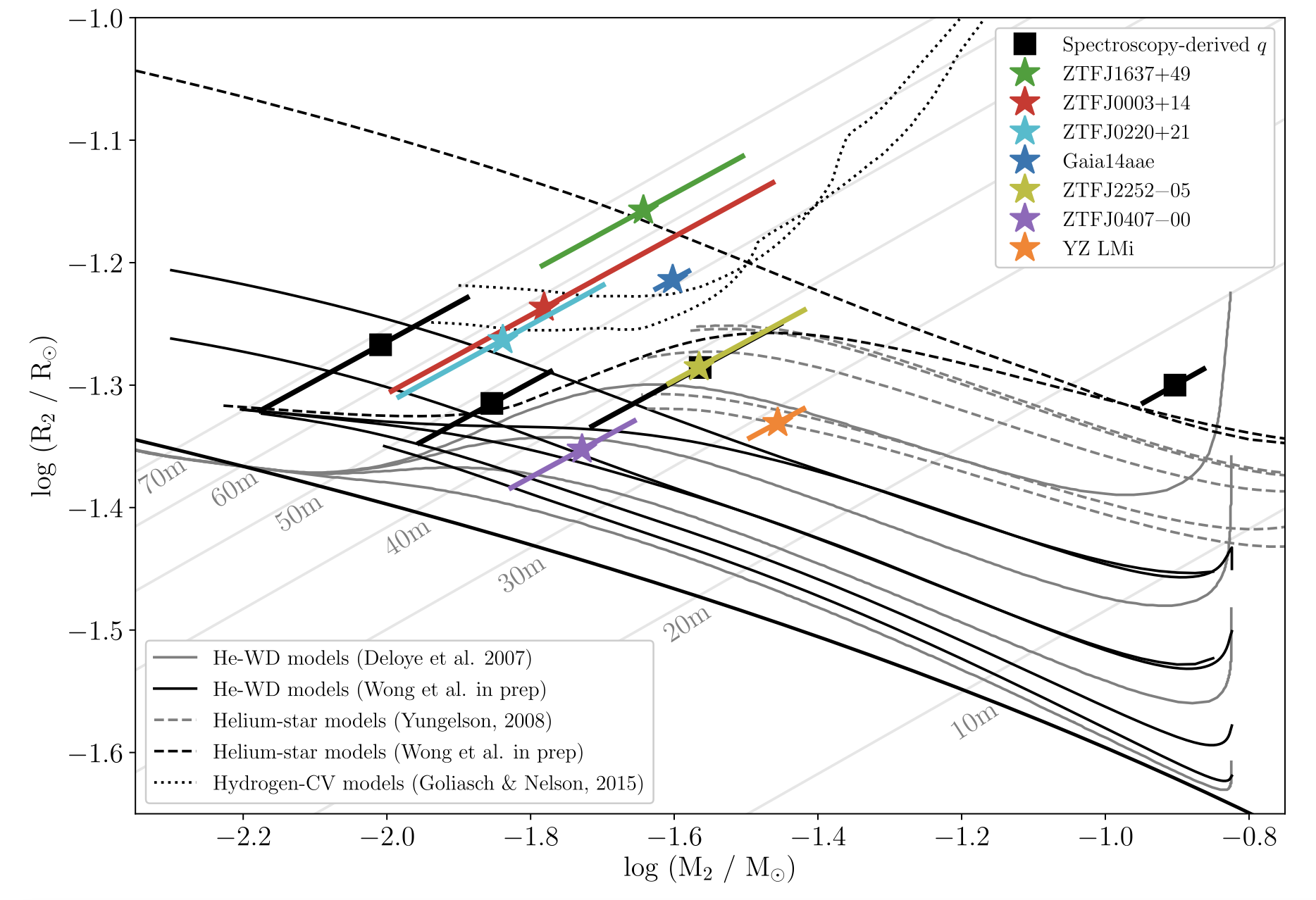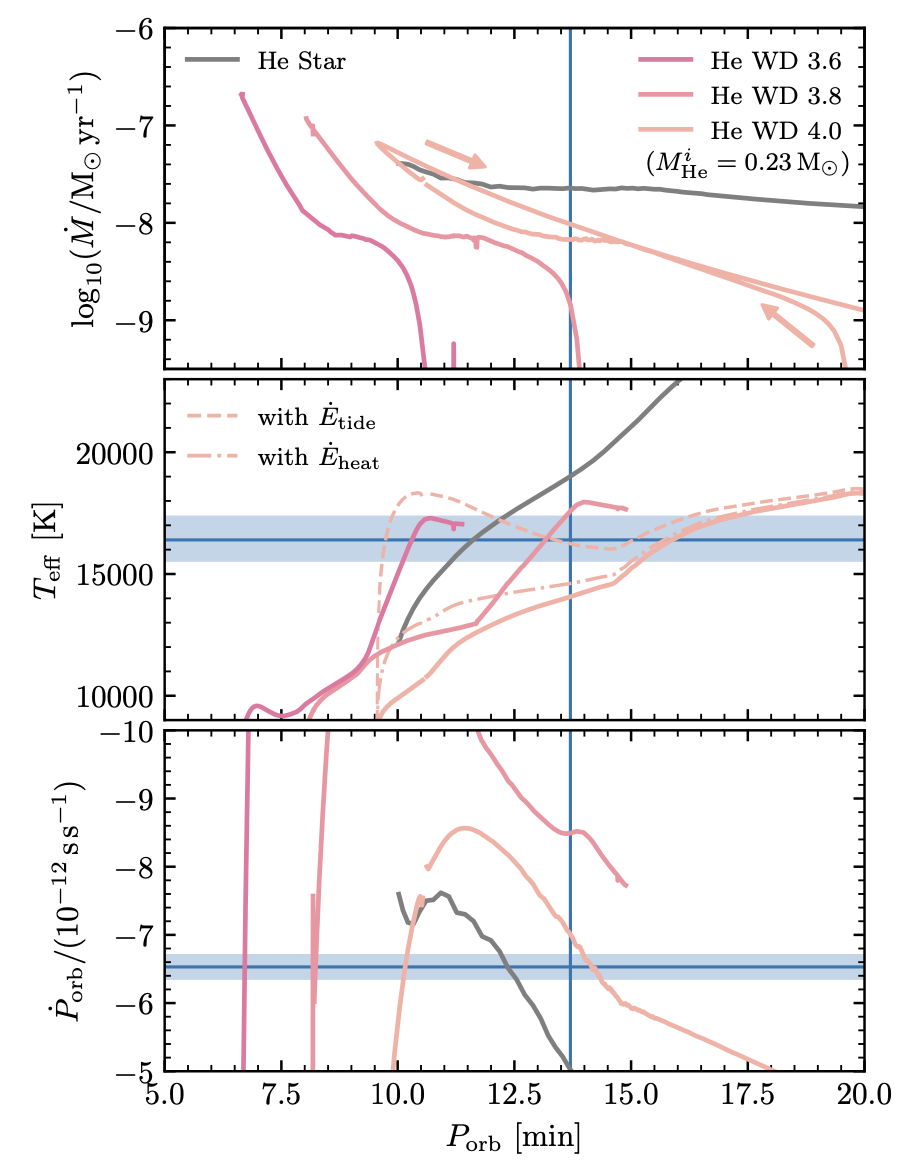Mass Transfer and Stellar Evolution of the White Dwarfs in AM CVn Binaries
In this paper (Wong & Bildsten 2021), we investigate the evolution of both white dwarfs in AM CVn binaries. We account for finite cooling time of the helium white dwarf donor, and show that the initial entropy (degree of electron degeneracy) of the donor and its subsequent thermal evolution sets the binary orbital evolution. We also show that the accreting white dwarf is reheated initially due to accretion, and cools again later. Observationally the accretors are brighter than expected, which highlights the possibility of additional white dwarf cooling physics.
Discovery and characterization of five new eclipsing AM CVn systems
I was a part of this paper led by Jan van Roestel (van Roestel et. al. 2022) which presents 5 new eclipsing AM CVn systems discovered from the Zwicky Transient Facility. Light curve modeling shows that the accreting white dwarf dominates the light of the system at long orbital periods, and in addition allows measurement of the mass-radius relation of the helium white dwarf donor. It confirms that the accreting white dwarfs appear brighter than expected, and also shows that the helium white dwarf donors have high entropy (less degenerate).
Orbital Decay in an Accreting and Eclipsing 13.7 Minute Orbital Period Binary with a Luminous Donor
I was a part of this paper led by Kevin Burdge (Burdge et. al. 2023) which presents a 13.7 minute binary discovered from the Zwicky Transient Facility, with a white dwarf accretor and a helium-rich donor. Remarkably the donor is much more luminous than a typical AM CVn donor, with a surface temperature of about 16,000 K. We interpreted the donor as a high-entropy helium white dwarf donor.
An Outburst by AM CVn Binary SDSS J113732.32+405458.3
In this research note (Wong et. al. 2021), we present the discovery of an outburst by a 60-minute AM CVn system from ZTF data, likely due to an accretion disk instability. It exhibited an exceptionally long (>300 day) outburst and is the long period AM CVn binary to undergo an outburst.



